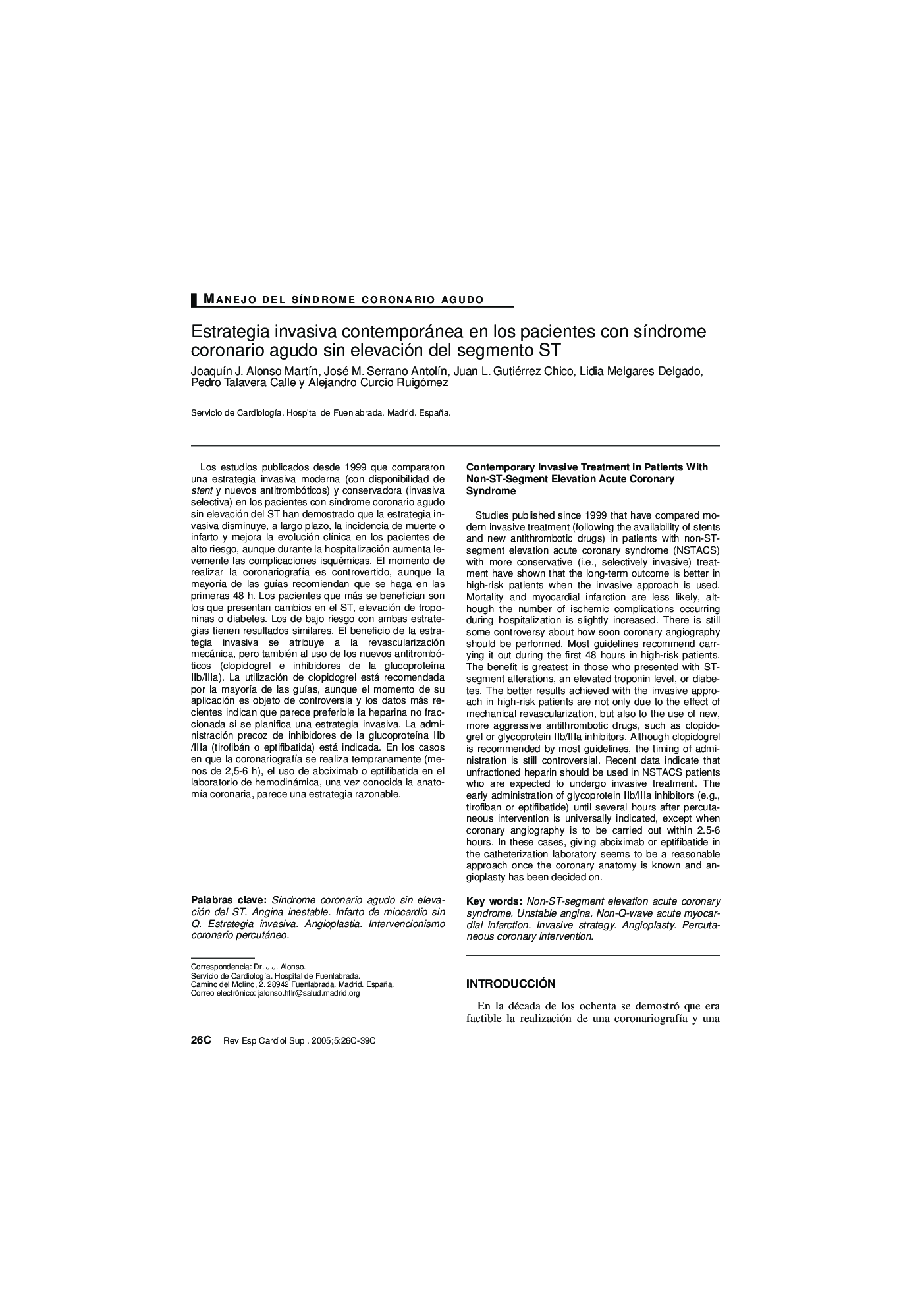| کد مقاله | کد نشریه | سال انتشار | مقاله انگلیسی | نسخه تمام متن |
|---|---|---|---|---|
| 9182275 | 1182268 | 2005 | 14 صفحه PDF | دانلود رایگان |
عنوان انگلیسی مقاله ISI
Estrategia invasiva contemporánea en los pacientes con sÃndrome coronario agudo sin elevación del segmento ST
دانلود مقاله + سفارش ترجمه
دانلود مقاله ISI انگلیسی
رایگان برای ایرانیان
کلمات کلیدی
non-ST-segment elevation acute coronary syndromeSíndrome coronario agudo sin elevación del STunstable angina - آنژین ناپایدارAngina inestable - آنژین ناپایدارangioplasty - آنژیوپلاستیAngioplastia - آنژیوپلاستیInvasive strategy - استراتژی تهاجمیEstrategia invasiva - استراتژی تهاجمیpercutaneous coronary intervention - مداخله کرونری از راه پوستIntervencionismo coronario percutáneo - مداخله کرونری پوستی
موضوعات مرتبط
علوم پزشکی و سلامت
پزشکی و دندانپزشکی
کاردیولوژی و پزشکی قلب و عروق
پیش نمایش صفحه اول مقاله

چکیده انگلیسی
Studies published since 1999 that have compared modern invasive treatment (following the availability of stents and new antithrombotic drugs) in patients with non-STsegment elevation acute coronary syndrome (NSTACS) with more conservative (i.e., selectively invasive) treatment have shown that the long-term outcome is better in high-risk patients when the invasive approach is used. Mortality and myocardial infarction are less likely, although the number of ischemic complications occurring during hospitalization is slightly increased. There is still some controversy about how soon coronary angiography should be performed. Most guidelines recommend carrying it out during the first 48 hours in high-risk patients. The benefit is greatest in those who presented with STsegment alterations, an elevated troponin level, or diabetes. The better results achieved with the invasive approach in high-risk patients are not only due to the effect of mechanical revascularization, but also to the use of new, more aggressive antithrombotic drugs, such as clopidogrel or glycoprotein IIb/IIIa inhibitors. Although clopidogrel is recommended by most guidelines, the timing of administration is still controversial. Recent data indicate that unfractioned heparin should be used in NSTACS patients who are expected to undergo invasive treatment. The early administration of glycoprotein IIb/IIIa inhibitors (e.g., tirofiban or eptifibatide) until several hours after percutaneous intervention is universally indicated, except when coronary angiography is to be carried out within 2.5-6 hours. In these cases, giving abciximab or eptifibatide in the catheterization laboratory seems to be a reasonable approach once the coronary anatomy is known and angioplasty has been decided on.
ناشر
Database: Elsevier - ScienceDirect (ساینس دایرکت)
Journal: Revista Española de CardiologÃa Suplementos - Volume 5, Issue 3, 2005, Pages 26C-39C
Journal: Revista Española de CardiologÃa Suplementos - Volume 5, Issue 3, 2005, Pages 26C-39C
نویسندگان
JoaquÃn J. Alonso MartÃn, José M. Serrano AntolÃn, Juan L. Gutiérrez Chico, Lidia Melgares Delgado, Pedro Talavera Calle, Alejandro Curcio Ruigómez,